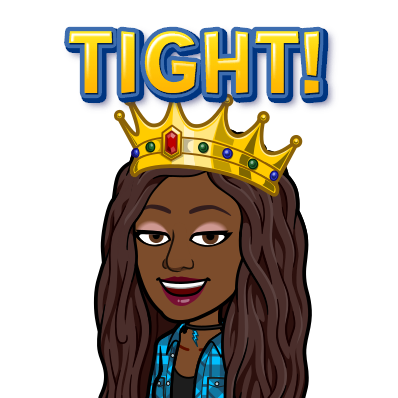Computer Love Language: The Art of Memes, GIFs, and Emojis
An ever-evolving language, rich with memes, GIFs, emojis, and personalized avatars like Bitmojis, has become a crucial way of expressing affection, humor, and understanding.
THE TRUTH TOLD BLOG
Queen Tasha
7/9/20245 min read


The Rise of Computer Love
In the digital age, love has evolved. Gone are the days of handwritten letters and long phone calls (though they still hold their charm). Now our screens are our windows to the world and our keyboards are the conduits of our emotions, a new love language has emerged: "COMPUTER LOVE". This language, rich with memes, GIFs, emojis, and personalized avatars like Bitmojis, has become a crucial way of expressing affection, humor, and understanding. It's a silent yet powerful form of communication that can say more than words ever could. This modern form of communication, affectionately dubbed "Computer Love," has become a vital part of maintaining connections, especially for those of us who live alone and rely on the digital world to stay in touch.
Let's face it: in a world where we're often separated by miles but connected by Wi-Fi, traditional love languages like physical touch or quality time need a digital makeover. Enter computer love—a language that doesn't require eloquent words or grand gestures but thrives on the simplicity of a well-timed meme or a perfectly looped GIF. This form of expression is not only endearing but also incredibly personal, showing that you understand someone well enough to know which image, video, or emoji will make their day.
The Art of the Meme
Let's start with the meme—a cornerstone of computer love. Memes are humorous images, videos, or pieces of text that spread rapidly across the internet. They often carry cultural references, inside jokes, or relatable sentiments that resonate with us on a personal level. Sending a meme without a caption is an act of pure understanding. It's like saying, "I know you'll get this," without uttering a single word. It's a testament to the depth of your connection with someone when they can send you a meme, and you instantly understand the message and appreciate the sentiment behind it.
Memes have a rich history, originating from Richard Dawkins' 1976 book "The Selfish Gene," where he coined the term to describe how cultural information spreads. In the 90s and early 2000s, internet memes began to take off, with early examples like the Dancing Baby and All Your Base Are Belong to Us. Today, memes are an integral part of our online communication, evolving rapidly and often reflecting the zeitgeist.
GIFs: The Moving Picture Show of the Digital Age
Next up are GIFs (Graphics Interchange Format). These looping animations can convey a wide range of emotions and reactions, often more effectively than words. Whether it's a clip of a cute animal, a scene from a favorite TV show, or a hilarious moment caught on camera, GIFs add an extra layer of expression to our digital interactions.
GIFs were introduced by CompuServe in 1987, and they've come a long way since their pixelated beginnings. The advent of platforms like Giphy and Tenor has made finding the perfect GIF easier than ever, allowing us to convey everything from joy to sarcasm with just a few frames of animation.
The Emoji Revolution
Emojis, those tiny pictograms we sprinkle throughout our messages, have revolutionized how we communicate emotion. A well-placed emoji can change the entire tone of a conversation. Whether it's a heart ❤️ to express love, a laughing face 😂 to share in the joy, or a facepalm 🤦♂️ to convey exasperation, emojis help us communicate nuances that text alone often misses.
Emojis have their roots in Japan, where Shigetaka Kurita created the first set in 1999 for a mobile internet platform. Since then, they've exploded in popularity, with the Unicode Consortium continually adding new emojis to reflect a broader range of experiences and identities. Today, there are thousands of emojis at our disposal, each one a tiny, potent tool for digital expression.
Bitmojis and Personalized Avatars
Personalized avatars, such as Bitmojis, take digital expression to the next level. These customizable characters allow us to create a digital version of ourselves, complete with outfits, expressions, and scenes that reflect our personalities. Sending a Bitmoji is like sending a piece of yourself—a virtual you that can hug, wave, laugh, or even roll its eyes.
Bitmojis were developed by the company Bitstrips in 2007 and later acquired by Snapchat in 2016. Since then, they've become a staple in digital communication, offering a fun and personal way to express ourselves in the virtual world.
The Impact of Computer Love on Relationships
Computer love isn't just about the tools we use; it's about the understanding and connection they represent. When someone sends you a meme, a GIF, or an emoji, they're not just sharing a piece of digital content—they're sharing a moment, a laugh, a thought. It's a way of saying, "I thought of you when I saw this," and that can be incredibly meaningful, especially when physical presence isn't an option.
For those of us who live alone and rely on the digital world to stay connected, computer love has become a top love language. It's a way of maintaining bonds, expressing affection, and feeling connected, even from a distance. When friends and loved ones send me a meme with no caption, it tells me they're thinking of me and that they know I'll understand the joke. It’s a silent communication that speaks volumes about our relationship.
However, as with any form of communication, computer love has its pitfalls. Misunderstandings can occur, and jealousy can rear its ugly head in romantic relationships. An innocent meme sent to a friend might be misinterpreted by a partner, or an emoji might convey a sentiment that wasn't intended. It's essential to communicate openly and ensure that the digital shorthand we use doesn't replace deeper, more meaningful conversations.
Embracing the New Age of Love
As we navigate this new age of love, it's crucial to embrace these digital forms of communication while also being mindful of their limitations. Computer love—through memes, GIFs, emojis, and avatars—adds richness to our interactions and helps us stay connected in a fast-paced, ever-changing world. It’s a language of its own, one that continues to evolve and grow with us.
So next time you receive a meme, a GIF, or a Bitmoji, take a moment to appreciate the thought and understanding behind it. It’s more than just a piece of digital content; it’s a modern expression of love and connection. And in this digital age, that’s something truly special.
In a world where we're more connected than ever, yet often physically apart, computer love is a beautiful way to show that we care, understand, and think about each other. So, keep those memes coming, sprinkle those emojis liberally, and let your Bitmoji express your virtual self. After all, in the realm of computer love, a picture—or a GIF—is worth a thousand words.






Mailing Address
690 Main St. PMB 10023
Safety Harbor, FL 34695
Subscribe to Newsletter
Contacts
QueenTashasEmpire@gmail.com
